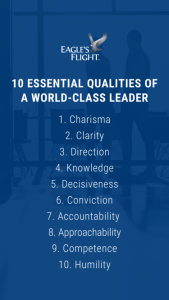Have you heard of emotional agility? Coined by the Harvard Business Review, the term closely aligns with a more widely used term, emotional intelligence—but the two concepts are not interchangeable.
Emotional intelligence is defined as being aware of and in control of one’s own emotions. On the other hand, emotional agility is defined as approaching one’s inner experiences mindfully and productively, a feat that has become increasingly challenging during this COVID season.
The differences between emotional intelligence and emotional agility can have a profound impact on how leaders perform and how they treat others in the workplace. Just like emotional intelligence, emotional agility requires one to be in tune with their own emotions, but it doesn’t place emphasis on suppressing or controlling them. You can be emotionally intelligent but still lack emotional agility (though the reverse is not true). Leaders today are facing challenges surrounding mental well-being which are immune to demographics, thus, strategies that employ emotional agility are increasingly important. Becoming more emotionally agile will make you a better leader—while remaining emotionally rigid can compromise your ability to lead effectively and make the best decisions for your team. Here’s how:
How A Lack of Emotional Agility Affects Leadership
Leaders are always expected to be “in control”—so they tend to suppress negative emotions or push them away when in the corporate realm. In reality, though, they get hooked on these emotions, creating unhealthy and unsustainable habits to try to control them, as Susan David, the author of Emotional Agility, explained in HBR. When leaders become hooked on their negative emotions, their thinking becomes rigid and repetitive. They become stuck in old patterns. That’s bad news for leaders, since world-class leadership requires a high level of agility. Moreover, a lack of emotional agility in a leadership team can stifle innovation and stall personal development.
Lacking emotional agility can also impact a leader’s decision-making abilities. Leaders may try to avoid new situations or challenges that may trigger their negative thoughts, passing on opportunities that would actually be good for them and the company. Or they may take the opposite route, intentionally trying to push back their negative thoughts by taking on situations they’re not equipped to handle or that go against their values. Either way, they let their negative emotions—not rational business decisions—rule them.
Finally, a leader must always be thinking of how his or her actions influence those around them. Emotional inflexibility sets a bad example for employees. Employees take behavioral cues from their leaders, so employees will pick up on and adopt the negative emotional styles of leaders who aren’t emotionally agile. That can result in a toxic workplace culture, one where stilting emotions and not speaking freely or emotional outbursts become the norm. Consequently, when you account for the additional stress and pressure employees are tackling in work cultures that are struggling to accommodate the pandemic, you may well find yourself confronting a loss of camaraderie and respect amongst your team.
How Leaders Can Become More Emotionally Agile
The cost of remaining emotionally rigid is clear, while becoming more emotionally agile can help you become a world-class leader known for sparking change and embracing a vibrant organizational culture. Here are two ways you can become a more emotionally agile leader in the workplace:
1. Practice Acceptance
Instead of fighting or hiding from negative emotions, leaders should first accept them, allowing themselves to fully feel them. Unfortunately, this is especially tough for leaders to do because of the clichés associated with projecting leadership. For example, a survey recently revealed that the number one most important trait for a leader is positivity—expectations like this, of an always sunny and encouraging disposition, make it hard for leaders to accept their negative emotions. Doing so, however, gives leaders a chance to model healthy ways to deal with emotions to their employees while avoiding making important decisions based on said emotions.
2. Take Actions Based On Values Over Emotions
Of course, there’s a difference between acceptance and action. Just because you accept your negative emotions doesn’t mean you have to act on them. In fact, Susan David recommends that before responding from an emotional place, leaders should examine whether that reaction will further serve their own values or help others in the company. Making values-based, not emotion-based, decisions can also help leaders shape a workplace culture into one built on values. Leaders can use the stated values of their organization to guide their actions, instead of relying on their emotions.
3. Exercise Tolerance When Modeling Emotional Agility for Your Team
These practices will ensure that as a leader, you have the ability and skillset to handle emotionally laborious obstacles in a healthy way. However, you must take care to have patience when instilling these lessons in others, both in how they come to understand what emotional agility is, and in how they learn to apply emotional resolutions. Becoming emotionally agile isn’t something that will simply happen, nor is it something that all people will inherently understand. It will take time, and for many will be an arduous undertaking, especially for those who are unused to tactics that require being attuned to your emotions. They will be confronting their own negative or unwelcome experiences, which often perpetuates feelings of shame or frustration, and can manifest as disagreeable behavior. Being tolerant of this behavior, in yourself and in others, and of the time required to complete this education, is of paramount importance if you want people to grow to be emotionally agile leaders in their own right. As a leader, it is your responsibility to create an inclusive, safe space in which others can discover and progress along this journey for themselves.
Conclusion: Emotional Agility Impacts a Leader’s Effectiveness
How leaders deal with their emotions in the workplace has a profound effect on individual, team, and organizational success. Therefore, leaders need emotional agility in order to deal with negative emotions in healthy, productive ways. To encourage the development of this skill, organizations would benefit from including it in their leadership training and development plans.












